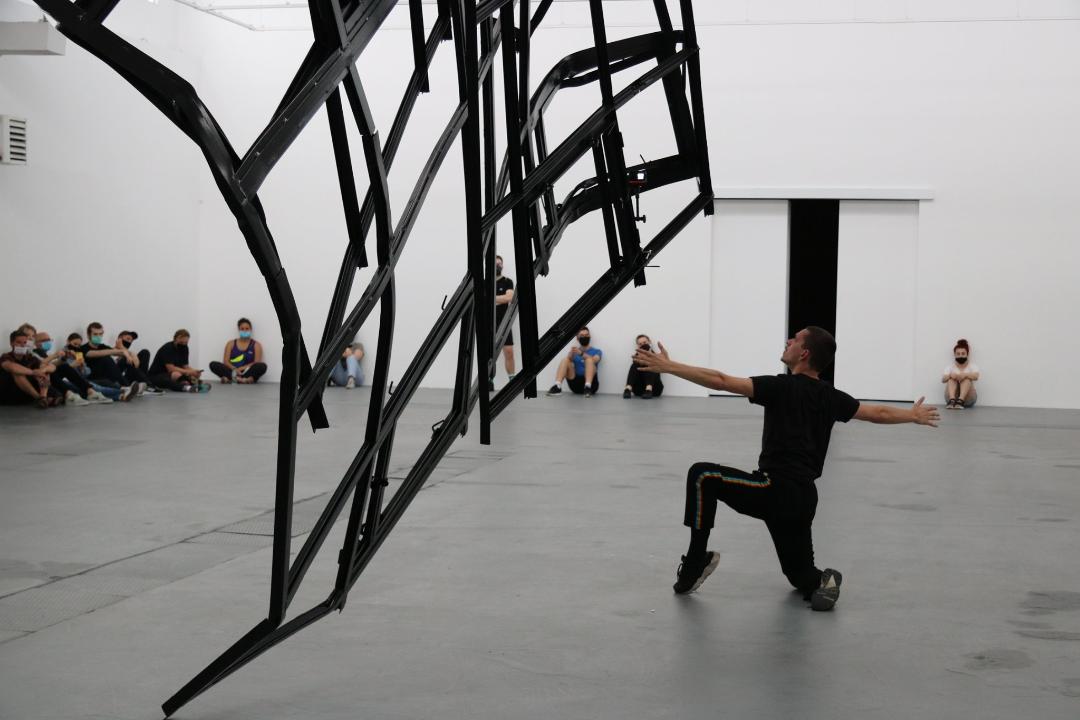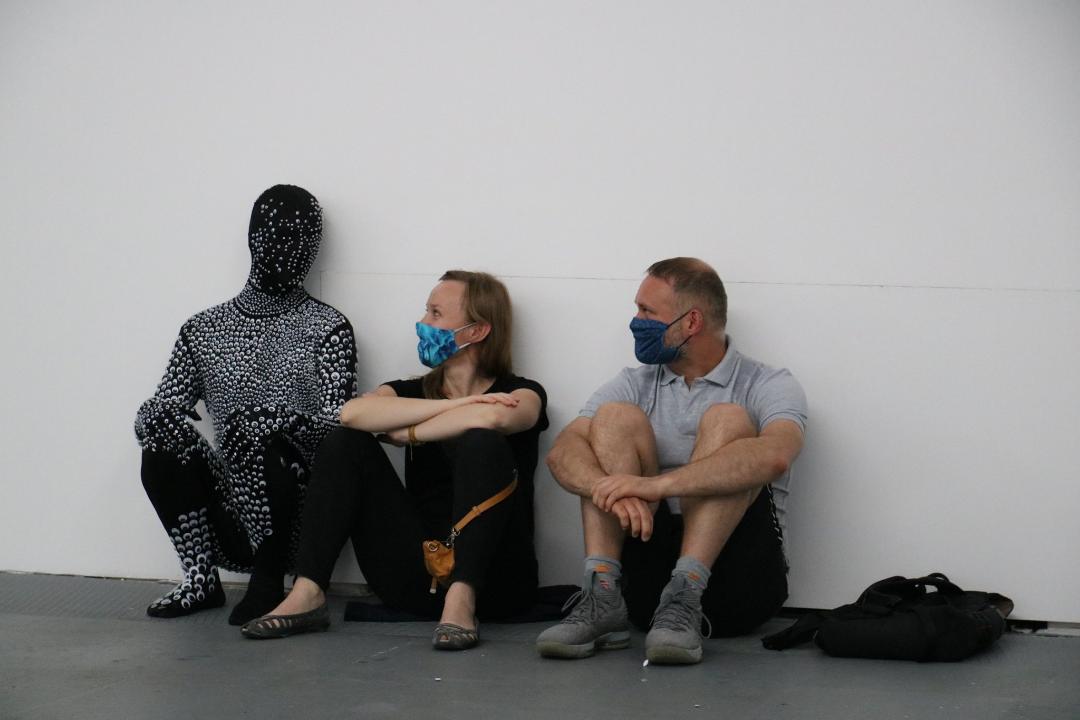Words by Katie Hagan.
We’re all praying for the LGBTQ+ community in Poland. When I caught up with performance artist Filip Kijowski a few months ago the severity of what’s now happened was boiling beneath the surface. Sadly, within months — and during a global pandemic — anti LGBTQ+ zones have poisoned the country, leaking dangerous amounts of hate and discrimination.
Filip and I caught up again a couple of weeks ago. He told me that since the fateful re-election the Polish president (who I legit won’t even waste my words naming), has drawn on derogatory constitutional clauses to fuel his rank agenda. These inscriptions prohibit LGBTQ+ couples from adoption and any teaching on same-sex families.
Roehampton dance grad Filip tells me he was undertaking a 10-day residency at Galeria Labirynt in Lublin as the president arrived for one of his rallies. How did that feel? “I did experience a lot of pain almost in a philosophical sense,” Filip explains. “Even now I feel it is too early for me to fully understand it.”
Filip’s residency was an open-task research opportunity centred on crafting a response to a sculpture named ‘Fasada’ by installation artist, Monika Sosnowska. Away from the outside world, Filip had the space to reconcile his interests in improvisation, sound and audience participation.
“Monika’s gigantic metal structure weighs up to two tonnes. One facade of the gallery’s building was replaced with this frame. To complement this edifice, I poured myself into this second-skin black suit which I’d sewn almost 7,000 googly eyes onto. Choreographer Nick Cave’s Soundsuit sculptures were my inspiration. Contrasting the suit with the structure, I wanted to explore how movement can stop and then escalate; how I can shake and run, what happens when I fall to the floor and isolate different body parts. I also made a choice to interact with people standing around the perimeters of the gallery space, which was an interesting experience given the pandemic.”

Aside from using the experience to hone his practice, Filip found time to consider how he felt personally within the space. “The pain of the twisted roots of this metal structure interested me at the time. I definitely found somewhere to relate the pain of the metal to the punishment the community felt and is still feeling now.”
Filip expresses to me that, as with many others in the community, he is still traumatised and trying to process what has happened. “Just a few days before Duda arrived, he publicly announced that LGBTQ+ people are not human, they’re an ideology.” Die-hard Polish conservatives take Duda’s words as gospel. A populace can be fickle and easily lead — Brexit showed the UK that. But in Poland, within the past few days the police has made countless arrests of LGBTQ+ protestors. Those who feared this hostility when the right-wing populist party was elected five years ago are now planning to leave the country.
Filip has been away from Poland for the past thirteen years, studying in London and dancing in Bangkok. Yet, this absence has given him time to recharge and unlearn all the negative things he’d been taught to be true growing up in Poland. “Integrating into an unfamiliar arts space took a lot of strength, so imagine returning to a place where I had bad experiences as a queer kid.”
“Although some institutions will still publicly say they don’t want any gay artists to share their work here, it’s important to remember that they are going to be the minority one day. Others such as Galeria Labirynt gave me an opportunity to create what was essentially my first work as a performance artist in Poland. It quickly taught me there are so many artists living here who have open hearts and care about gender equality and want to create work that opposes President Duda’s discriminations. We need to preserve these safe, nurturable spaces where people can be comfortable with who they are.”
Under a harmful government, the community is rising up in defiance. “At the end of June, the director of Galeria Labirynt created an exhibition called ‘JesteÅ›my ludźmi / We Are People’ where he invited around 50 LGBTQ+ artists from around Poland to share their work. By chance I was able to get involved.”
“The most beautiful thing about this project was the visibility it offered when the entire world is looking on at a president who is inciting hate and queerphobia. It provided a platform for the community and artists to allow us to speak for ourselves, as opposed to being labelled less than and branded an ideology.”
This strength has inspired Filip to create a new project which questions the mindset of queerphobic people in Poland. “I visit public places and ask them to design a postcard in any way they wish. Sometimes I would spend six hours on a street in Warsaw and people would spend 45 minutes creating a postcard showing their messages, drawings and poems. Everyone has the same access to felt-tips, and they can take the time to create something that is true to them.”

Postcards are super nostalgic and capture a moment in time that be reimagined. There is also something quite official about them. “It’s a fitting way to show that this is who we are. We will not stop living because you hate us.”
Going forward, Filip is considering how to progress the project. “As the postcards are addressed to the White House, I’d like to publicly display them as part of an exhibition, maybe alongside short dance films to show the manifestations of the postcards. A fellow artist, Barbara Gryka and I also wish to travel to the LGBTQ+ free zones in the rural areas of Poland to ask inhabitants why they listen to those in power.”
“Sometimes I’m afraid to approach the very people who surprise me the most. They’re the ones where the conversation really opens up. Some people don’t want to speak and that is hurtful. They are not ready to listen. I’m not fazed by it though as it’s really important that I produce this work to give voice to my community in times of significant oppression.”
Images: Diana Kolczewska.
